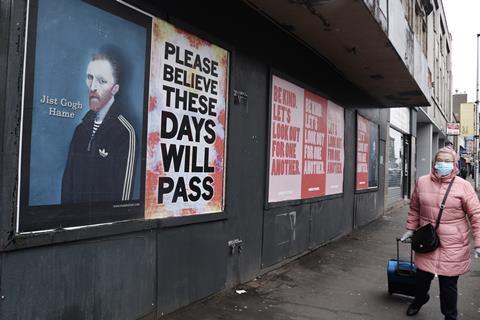Government sets out guidance in 60 page briefing document

The government has published new guidance to provide clarity of what is allowed in the next phase of its coronavirus combat strategy.
In an address to the nation last night, Boris Johnson said construction was one of those sectors that should go back to work seven weeks after he brought in the lockdown.
Called , the 60 page document sets out how the UK will gradually ease lockdown measures.
Here are 10 ways that construction will be impacted.
- International construction workers could be given exemption to post-travel isolation
While the government is introducing a 14-day quarantine for those arriving in the country from overseas, excluding those from Ireland and France, overseas construction workers could be allowed to skip the isolation period.
The guidance says: "Small exemptions to these measures will be in place to provide for continued security of supply into the UK and so as not to impede work supporting national security or critical infrastructure and to meet the UK’s international obligations." - Changes to economic support measures imminent
The government is set to start to winding back its measures to support firms during the covid-19 crisis given the Office for Budget Responsibility has estimated that the direct cost to the government of the response to covid-19 could rise above £100bn in 2020-21. The government’s furlough scheme ends on 30 June but no date is given when the initiative will be start to be wound down. It said six million workers from 800,000 firms have so far been furloughed.
The guidance says: "As the UK adjusts the current restrictions, the government will also need to wind down the economic support measures while people are eased back to work." - Advice to wear face covering in enclosed spaces where social distancing is not possible
The guidance says: "People should aim to wear a face-covering in enclosed spaces where social distancing is not always possible and they come into contact with others that they do not normally meet, for example on public transport or in some shops."
A face covering is not the same as a facemask such as the surgical masks or respirators used as part of personal protective equipment by healthcare and other workers. These supplies must continue to be reserved for those who need it. - Communal surfaces need to be cleaned thoroughly and regularly
The government has issued guidance to help make adjustments to workplaces to help maintain social distance and guidance on hygiene as evidence suggests that the virus can exist for up to 72 hours on surfaces.
The guidance says: "Frequent cleaning is particularly important for communal surfaces like door handles or lift buttons and communal areas like bathrooms, kitchens and tea points." - Work to build new infrastructure up for grabs
There may be more construction work available to help provide cycling and walking infrastructure.
The guidance says: "This will involve expanding the infrastructure for active travel (cycling and walking) and expanding health screening services, especially through the NHS Health Check programme, which is currently under review." - The government still plans to build 40 new hospitals
The multi-billion-pound plan to build 40 new hospitals across the year is still proposed to continue meaning a significant pipeline of work for construction.
The guidance says: "The government remains committed to delivering its manifesto, including to building 40 new hospitals, reforming social care, recruiting and retaining 50,000 more nurses and creating 50 million new GP surgery appointments." - Social distancing guidance for workplaces remains "where possible"
The government is still recommending that workplaces enforce social distancing if at all possible.
The guidance says: "Workplaces should, where possible, ensure employees can maintain a two-metre distance from others, and wash their hands regularly." - Firms told to continue with shift patterns
The government has recommended companies introduce new shift patterns, something active construction firms have been doing throughout lockdown.
The guidance says: "Employers can support this where practical by changing shift patterns and rotas to keep smaller, contained teams. Evidence also suggests the virus is less likely to be transmitted in well-ventilated areas." - There will be work redesigning offices and public spaces
There will be work up for grabs to help redesign and revamp offices and public spaces to make them safer and reduce the spread of covid-19.
The guidance says: "Over time, social contact will be made less infectious by making such contact safer including by redesigning public and work spaces." - Workers have still been told to avoid public transport
Construction workers are still being told to avoid public transport wherever possible - something that has been a particular issue for firms working in London.
It says: "If they can, people should instead choose to cycle, walk or drive, to minimise the number of people with whom they come into close contact."



























No comments yet